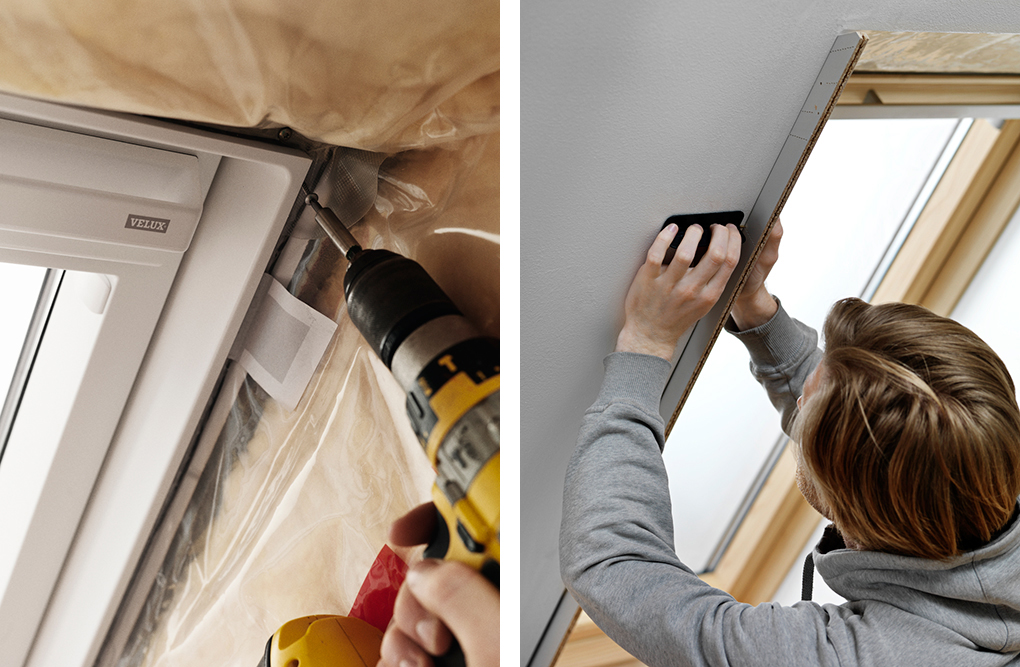EXTENSION AUDIT
GARAGE CONVERSION AUDIT
STRUCTURAL LOFT CONVERSION AUDIT
PRE-PURCHASE FEASABILITY CONSULTATION
TEMPORARY WORKS
STEEL WORK CONNECTIONS
SITE VISIT
INTERIOR MINOR ALTERATIONS
CDM & ASSOCIATED REPORTS
HEALTH & SAFETY REPORTS
3D MODELLING (from)
PROJECT MANAGEMENT
SOIL INVESTIGATION REPORTS
AIR PRESSURE TESTING
SOUND TESTING
BUILDING CONTROL APPLICATIONS
AIR TIGHTNESS TESTING
SOUND INSULATION TESTING
PART F VENTILATION TESTING
RENEWABLE ENERGY ADVICE & INSTALL
ENERGY STATEMENTS
THERMOGRAPHIC SURVEYS & TESTING
CODE FOR SUSTAINABLE HOMES
PART G WATER CALCS
DOMESTIC EPC’S FOR LANDLORDS & HOMEOWNERS
To really enjoy your loft and always have plenty of natural light, a good atmosphere, and a lot of fresh air, you need to avoid a few very typical mistakes. So be sure to check out the five rules that you must know because errors when selecting and installing skylights are expensive and difficult to correct.
1. Roof window installation height
There are two basic rules regarding the optimum height at which skylights are installed:
Lower control roof windows are only recommended for high ashlar walls 130 to 150 cm above floor level. Placing furniture under the lower control window will interfere with access to the handle, so we recommend that you leave space for optimal use of this type of skylight.
The unique upper handle also allows you to mount the window at a height that gives you the perfect view, whether standing or sitting.

Roof windows with top controls are perfect for ashlar walls up to 130 cm above floor level because the top controls give you the ability to place a table or sofa under the window and at the same time open the window comfortably.

You can also see how it all looks in practice on video animation:
Credit by Velux
2. Window size
The size of the skylight is defined by several factors: the purpose and orientation of the room, the external environment, our affinities and habits, and the impression we want to make in the space.
It is necessary to bring in as much daylight as possible into the living room as well as in the workrooms, and then we can consider larger glazed surfaces, and the general recommendation is that glazed surfaces make up at least 10% of the floor space of a given space.
3. Improper inner lining
To get the most out of your skylight, it is important to properly install the trim around the window. The top and bottom of the lining should be as open as possible to obtain the best natural daylight. It is also necessary to achieve airflow throughout the glass surface, which will reduce condensation in winter.
Energy efficiency should be considered when installing windows, and one of the best solutions is the protection that reduces heat in the summer by up to 73%.

4. Window type and model
Choosing the right type of skylight as well as the interior material is very important for the continued maintenance and durability of the windows. Wooden windows with one or more coatings of lacquer will give the attic room a natural look while lacquering will require every three to four years. Not recommended in rooms with high humidity levels.
Bathrooms and kitchens are also recommended with wooden windows covered with a layer of white polyurethane, which gives them high durability and allows easy and easy maintenance.
The way windows are opened is also important. If we choose the window with the upper suspension, we will extend the view towards the outside, while the choice of the window with the central suspension allows us to place the furniture under the window itself.
The newer generation of skylights, such as the CABRIO roof balcony, also allows for the extension of the roof space to the exterior when there is no possibility of access to the terrace, where the roof window becomes a balcony.

5. Roller shutter improvisation
A common mistake in attic design is the lack of attention to sun and light protection and improvisation of these elements. Experts, therefore, advise using different types of shutters and blinds instead of curtains for a particular window model.
Depending on the purpose of the room and its orientation, you can opt for a blind that allows total or partial blackout, Venetian blinds or elegant and decorative Roman blinds.
